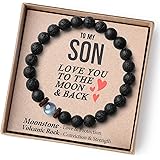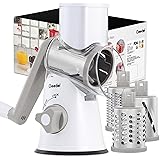ESR for iPhone 16 Pro Max Case, Compatible with MagSafe, Shockproof Military-Grade Protection, Magnetic Phone Case for iPhone 16 Pro Max 6.9 inch, Clear
$11.99 (as of November 23, 2024 21:30 GMT +00:00 - More infoProduct prices and availability are accurate as of the date/time indicated and are subject to change. Any price and availability information displayed on [relevant Amazon Site(s), as applicable] at the time of purchase will apply to the purchase of this product.)Fullstar Vegetable Chopper - Food Chopper - Onion Chopper - Vegetable Slicer & Spiralizer - Veggie Chopper with Container - Kitchen Gadgets - Home Essentials - Kitchen Accessories (4 in 1, White)
$24.86 (as of November 23, 2024 21:30 GMT +00:00 - More infoProduct prices and availability are accurate as of the date/time indicated and are subject to change. Any price and availability information displayed on [relevant Amazon Site(s), as applicable] at the time of purchase will apply to the purchase of this product.)Mario & Luigi: Brothership for Nintendo Switch
$54.99 (as of November 23, 2024 21:30 GMT +00:00 - More infoProduct prices and availability are accurate as of the date/time indicated and are subject to change. Any price and availability information displayed on [relevant Amazon Site(s), as applicable] at the time of purchase will apply to the purchase of this product.)Core Power Fairlife 26g Protein Milk Shakes, Liquid Ready To Drink for Workout Recovery, Chocolate, 14 Fl Oz Bottle (Pack of 12)
$32.34 (as of November 23, 2024 21:30 GMT +00:00 - More infoProduct prices and availability are accurate as of the date/time indicated and are subject to change. Any price and availability information displayed on [relevant Amazon Site(s), as applicable] at the time of purchase will apply to the purchase of this product.)Bedsure Black Throw Blanket for Couch - Super Soft Cozy Blankets for Women, Cute Small Fleece Blanket for Girls, 50x60 Inches
$21.99 (as of November 23, 2024 21:30 GMT +00:00 - More infoProduct prices and availability are accurate as of the date/time indicated and are subject to change. Any price and availability information displayed on [relevant Amazon Site(s), as applicable] at the time of purchase will apply to the purchase of this product.)Compression socks have been a staple in medical and athletic communities for decades. These specialized socks are designed to provide graduated compression, which helps improve blood flow and alleviate various health issues. In recent years, compression socks have gained popularity among individuals seeking to enhance their overall well-being. Let’s delve into the world of compression socks and explore their benefits, features, and what makes them so effective.
What are Compression Socks?
Compression socks are specially designed socks that apply graduated pressure to the legs, typically between 8-20 mmHg (millimeters of mercury). This pressure is greatest at the ankle and decreases as it moves up the leg. The compression helps improve blood flow by pushing deoxygenated blood back towards the heart, where it can be re-oxygenated. This process enhances circulation, reduces swelling, and alleviates fatigue.
Benefits of Compression Socks
The benefits of compression socks are numerous:
- Improved Circulation: By enhancing blood flow, compression socks help reduce swelling in the legs and feet.
- Pain Relief: Graduated compression can alleviate pain associated with conditions like plantar fasciitis, varicose veins, and edema.
- Reduced Fatigue: Compression socks can help reduce fatigue by improving circulation and reducing lactic acid buildup in the muscles.
- Enhanced Athletic Performance: By providing additional support and stability, compression socks can improve athletic performance and reduce the risk of injury.
Features to Look for in Compression Socks
When selecting a pair of compression socks, consider the following features:
- Pressure Levels: Choose socks with graduated pressure levels (8-20 mmHg) for optimal benefits.
- Material: Opt for high-quality materials that provide comfort and durability, such as cotton, polyester, or nylon blends.
- Fit: Select socks that fit snugly but not too tightly to ensure proper compression and comfort.
- Breathability: Look for socks with moisture-wicking properties to keep your feet dry and comfortable.
Types of Compression Socks
There are several types of compression socks available, catering to different needs and preferences:
- Medical-Grade Socks: Designed for individuals with specific medical conditions, such as varicose veins or deep vein thrombosis.
- Athletic Socks: Engineered for athletes, these socks provide additional support and stability during exercise.
- Compression Knee Highs: Providing graduated compression from the ankle to the knee, these socks are ideal for individuals with knee problems.
Conclusion
Compression socks have revolutionized the way we approach foot health and athletic performance. By understanding the benefits, features, and types of compression socks available, you can make informed decisions about incorporating them into your daily routine. Whether you’re seeking relief from medical conditions or looking to enhance your athletic abilities, compression socks are an effective solution worth exploring.
Key Compression Sock Brands:
- CEP
- Injinji
- Zensah
- 2XU









